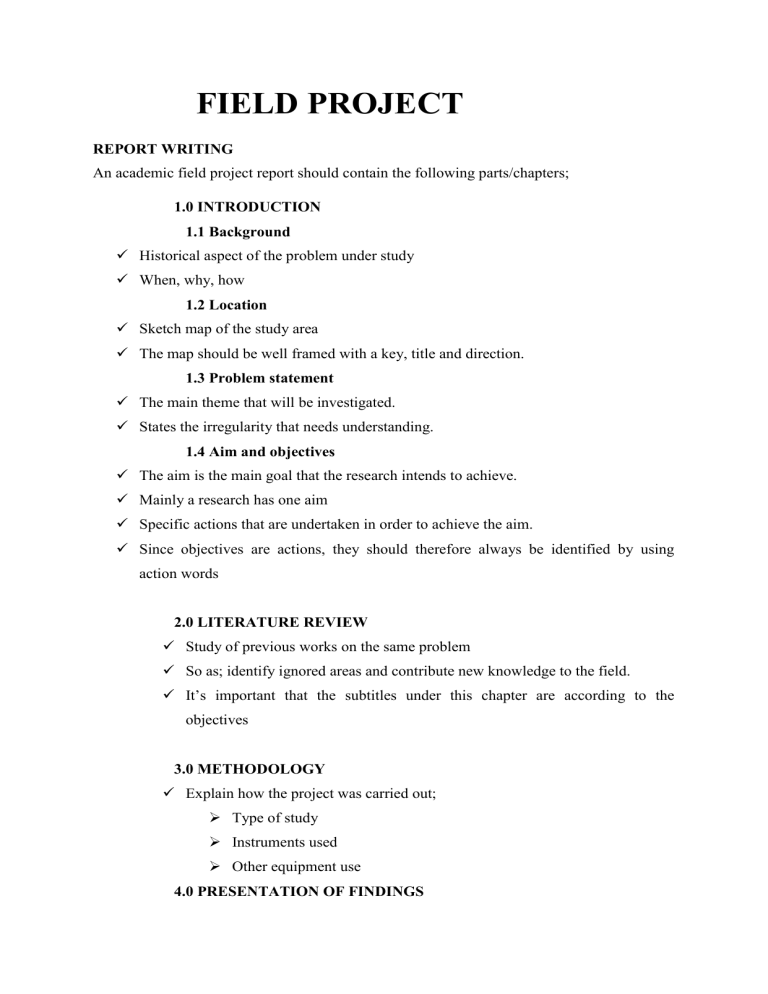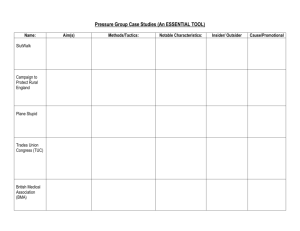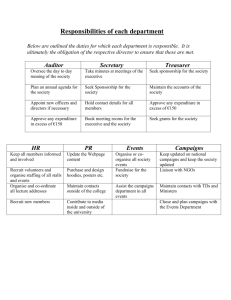
FIELD PROJECT REPORT WRITING An academic field project report should contain the following parts/chapters; 1.0 INTRODUCTION 1.1 Background Historical aspect of the problem under study When, why, how 1.2 Location Sketch map of the study area The map should be well framed with a key, title and direction. 1.3 Problem statement The main theme that will be investigated. States the irregularity that needs understanding. 1.4 Aim and objectives The aim is the main goal that the research intends to achieve. Mainly a research has one aim Specific actions that are undertaken in order to achieve the aim. Since objectives are actions, they should therefore always be identified by using action words 2.0 LITERATURE REVIEW Study of previous works on the same problem So as; identify ignored areas and contribute new knowledge to the field. It’s important that the subtitles under this chapter are according to the objectives 3.0 METHODOLOGY Explain how the project was carried out; Type of study Instruments used Other equipment use 4.0 PRESENTATION OF FINDINGS Present the findings using various tools; Tables Flow diagrams Graphs Statistical maps 5.0 INTERPRETATION OF FINDINGS Explain the findings State their implications 6.0 CONCLUSION AND RECOMMENDATION 6.1 Conclusion Confirm findings Contradict findings Bring out new information 6.2 Recommendation Suggest possible solutions to the problem Increase understanding of the topic under study TITLE This must be on a cover page. Should come from a geography topic either from physical or human geography Brief but to a point Specify the area of study eg. Kasuku area If it is a problem oriented research, let it have a dependent and an independent clause e.g. The effectiveness of environmental awareness campaigns on waste management in Kabwe urban. However, some titles may not have any problem to be investigated but merely a study eg a study of how Chitenge is produced at Mulungushi textiles in Kabwe CHAPTER ONE: INTRODUCTION: THIS HAS TWO PARTS 1.0. BACKGROUND this introduces the problem being investigated gives the historical background of the study eg, issue of waste management, one might show that it has been a menace to lives, every year it leads to cholera outbreaks, campaigns have been made but impact less hence the need to find out why. Must really justify the need to carry out a research. Problem statement is also highlighted at this stage Aim[s] and objectives are also highlighted If it is a factory, mention when opened, who own it ,what it produces and why it was opened 1.1. LOCATION Show sketch map of the place of study ensure key and direction are given PROBLEM STATEMENT This statement shows the puzzle the researcher has over an issue under study because despite the measures the situation doesn’t appear to be changing the puzzle you have is what takes one into the field to find out why. AIM/ OBJECTIVES This highlights what your study intends to achieve and is broader. e.g., on waste management campaigns my aim would be to investigate the effectiveness of awareness campaigns on waste management Aims should be stated in a suggestive or investigative manner to create inquisitiveness or curiosity. OBJECTIVES Don’t write to many objectives as that would make your report too long since only 1500 to 2000 words are required. Objectives guide the study as they point to specific areas that would help you achieve your aim eg, to find out if there are awareness campaigns, to assess regularity of campaigns, to establish modes of information dissemination CHAPTER TWO: LITERATURE REVIEW This reviews what others have said over the same issue under study. Literature in my example would be reviewed in line with the following objectives: whether awareness campaigns were conducted, how regular campaigns were done and mode of information dissemination It is reviewed in line with objectives to avoid wondering about CHAPTER THREE: METHODOLOGY 3.0 RESEARCH DESIGN Two research designs are recommended. descriptive surveys and case study This refers to the entire group of items, people, animal or group of anything under study E.g. my research included all the markets, shop owners or all schools in Kabwe urban SAMPLE This is the actual number of items, animals, people, etc. that will be used as respondents selected from the population The sample should be relatively large so as to be representative enough. A very small sample may not be representative due to biasness in sampling techniques Choose sample relevant to your study e.g. on waste management choose markets, councils and pupils Narration would be 30 marketers, 15 pupils and 5 council workers were sampled SAMPLING TECHNIQUES These show how you arrive at respondents and may include: simple random, systematic, convenience, purposive etc 3.2. DESCRIPTION OF PROCEDURES Listening To The Guide Breaking Into Groups Of 10 Each Note Taking Capturing Phenomena On Camera SECONDARY SOURCES Mention official documents used to supplement data reading books, journals, newspapers etc. RESEARCH INSTRUMENTS Mention tools used to collect data eg, questionnaires, interview guides, observation, camera, phone, field note books. CHAPTER FOUR: DATA PRESENTATION Introduce the objectives that constitute this chapter. eg, the information covered in this chapter was based on the following objectives: to find out whether there were any awareness campaigns, to assess how regular campaigns were made and to establish modes of information dissemination used. There should be no discussion and interpretation but just narration use tables, graphs, flow charts etc. CHAPTER FIVE: INTERPRETATION OF FINDINGS This chapter tries to show the interpretation of your findings e.g. The findings show a larger percentage showing ignorance of awareness campaigns. It also shows the implication of the situation obtaining on the ground, e.g., since awareness campaigns are not intensified, the tendency of littering would not improve meaning challenges of water borne diseases were likely to continue Does your finding answer or contradict your problem statement? e.g, this answers my puzzle as to why garbage is everywhere because campaigns have not been effective Comment on what literature has said eg, according to Mlgh ( 2001) garbage has the potential to claim many lives through cholera outbreaks and this is my concern too. PROBLEMS/ LIMITATIONS This shows the problems you faced while in the field conducting research. These may include language barrier, limited time, respondents not being interested and many more. CHAPTER SIX: CONCLUSION AND RECOMMENDATIONS 6.0: CONCLUSION Conclude basing on the findings, eg, it is clear that the cause of garbage heaps in our town is due to lack of good will by the concerned departments. little appears to be done to educate the masses. Relate your findings to your problem statement puzzle. eg this then answers my concern as to why our town has garbage heaps despite awareness campaigns, indeed it is not that people do it deliberately but lack education on dangers of garbage Comment on implications: eg unless something is done our town will remain dirty and vulnerable to water borne diseases. 6.1: RECOMMENDATIONS List down what you feel should be done to improve the situation. e.g. Make door to door awareness campaigns once each month Provide stationed bins on streets Put in place stern measures for offenders, etc REFERENCE Finally, show a reference page for secondary sources. An attachment of a questionnaire is helpful to a teacher if you have to understand data presentation part. This shows the books the researcher consulted In short the secondary sources The format is Author, Year (in brackets), full colon, Book title (which should be underlined,) Publishing Company and City. E.g. Creswell, J.W. (2014): Research Design 4th Edition. UK: SAGE Publications LTD, London SUMMARY OF PROJECT FORMAT Format of a Report The following format guidelines should be followed:Cover page – should have the name of the school and the candidate’s personal details. Introduction: Identification of field project: topic, historical aspect, statement of the problem including the brief conceptual background which will be related to the Aims and Objectives. Aims/Objectives The purpose /Intentions of the field research. Aims and objectives should be (SMART) simple, measurable, attainable, realistic and time Bound. Methods of data collection Identification of target populations: the study area (including the map of the research), respondents / participants, Interviews guides, cameras, questionnaires, note pads, maps, Experiments, observations, recording, taking pictures. Processing: classification, compiling, arranging of data. Presentation: use of graphs, tables, flow diagrams, pictures/photographs maps (computer-generated/ hand drawn) statistics, (mean, mode, median) Interpretation and analysis Description of findings with reference to aims and objectives. Provide balanced and well-reasoned arguments of findings. Explain any anomalies in the findings. Provide references to all maps and illustrations in the discussion. Evaluation and conclusion Conclusion of results based on it presented data. Confirm or contradict the findings and unearth new information. Recommendation: provide recommendations for the improvements of the situation/ solution to the problem. References: acknowledge any secondary sources.










